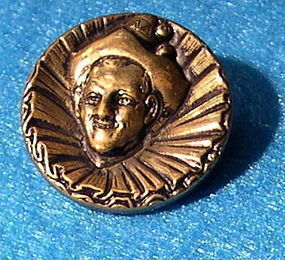 WHAT CAME FIRST THE FASTENER OR THE WEAPON?
WHAT CAME FIRST THE FASTENER OR THE WEAPON?
What are one of the oldest most antique items to collect?
We come upon Adam and Eve who are just seen tip-toeing, looking side to side, darting from behind one bush to another trying to hide. They have just been kicked out of paradise with only a fig leaf to their names and no way to keep it on!
What would you say is one of the most antique items that man had to make first? A fastener for the fig leaf or a weapon to bring down game?
Fellas, the answer is quite obvious. You just know Miss Eve batted her eyelashes and began something like this, "Adam darlin', please make me something really cute to keep this on. I can not be seen traipsing around in this old thing falling off around my ankles. I'll be the laughing stock! Make me something really stylish, pleeeeeze. Besides, look at you...you need to protect yourself from those nasty brambles!" Yikes!
He may have tried to counter with something like, 'First things first Eve, I have to kill something to eat'. She would bat them again, argue and cajole with, 'Who needs food? I gotta hide these hips...does this make me look fat?'
Please, stay with me and indulge my daily daydreaming: The Design House of Adam was born!
A Bit of History: Buttons or fasteners have been made for various purposes these last 4600 years as they have been found at bronze age sites in Europe and Asia. The earliest ones were most likely made from bones and old clam shells and although the first may have been used as seals, their ornamental value was to follow into the Renaissance Era.
Every possible material has been used to make buttons: most shells, pearls, ivory, horsehair, coconut, papier mache, gutta percha, gems, glass, cut steel, metals both precious and otherwise, woods, ceramics, fabric, all manner of synthetic or man made materials such as bakelite, lucite, celluloid, cinnabar; they were painted, enameled, stamped, engraved, pressed, hammered and the never ending list goes on.
As with jewelry, they too were made by artisans who employed the same jewelry making techniques to embellish and to demonstrate self expression. Makers looked to the visual arts for inspiration which included those used in the making of sculpture, ceramics, metalworking, painting, weaving, filigree, intaglio, passemeterie, miniature portraits, Satsuma ware, to name so few. It would take a book to explain... Oh wait...someone else has already done so. The BBB!
All images and text content solely owned by Mimi Dee and may not be reproduced in any form. April 2013


